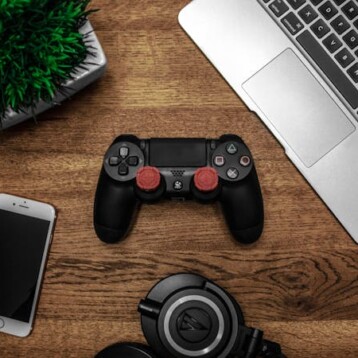Based on the most recent incarnation of Windows Mobile, the WM 6.1 Professional operating system, Samsung OMNIA is set to give users a mobile extension to their PC experience with access to MS Office documents such as PowerPoint, Excel, and Word. Furthermore, users can send and receive email and set their appointments in Outlook, giving them the ability to remotely manage their office. The Windows Mobile 6.1 Professional operating system means users personally customize their working environment for their individual needs. In order to improve navigation, an optical mouse and a trackpad similar to those found on laptops, are used for one-handed control over the phone.
The Samsung OMNIA is equipped with wide 3.2-inch WQVGA (240 x 400) LCD. The device comes preinstalled with Multi-Codec support for DivX and Xvid. Unlike the iPhone, this SmartPhone has a powerful 1440 mAh user-replaceable battery with 500 hours of standby time and almost 6 hours of talk time, according to Samsung. In real life users have reported between 2-3 days of light usage between charges.
Samsung’s new phone is equipped with an impressive 5-megapixel CMOS camera, with all of the latest features including auto-focus (AF), face and smile detection, and auto-panorama shot. The OMNIA comes with a generous internal memory of either 8GB or 16 GB, which can be extended using a microSDHC memory card. The device also includes a built-in GPS receiver with A-GPS support and geo-tagging capabilities. OMNIA supports all the latest connectivity standards, including quad band GSM, HSDPA, and EDGE as well as USB 2.0 for data transfer to PC, WiFi for Internet surfing, and Bluetooth 2.0 with A2DP. Moreover, the OMNIA also includes a TV out which enables users to connect to a television set using a built-in jack.
Samsung has installed in OMNIA its patented TouchWiz user interface (similar, although some claim not as comfortable, as HTC’s TouchFLO 3D interface). Furthermore, thanks to the high resolution touch-sensitive screen which uses intuitive tap, sweep, drag and drop operations and an on-screen QWERTY keyboard, the overall user experience is claimed to be much better than in regular phones. However, the new interface does require some time to adjust as some early adopters have remarked. Another aspect Samsung emphasizes in the OMNIA’s marketing campaign is its design. It has a slender, chic form, an ultra-slim 12.5-mm profile, and a platinum-look finish.
In comparison to the HTC Touch Diamond (also covered by TFOT) which fits in the same category, OMNIA has several advantages. It has almost double the battery life and a more solid build and finish, which consist of a bigger screen and overall dimensions (112mm x 56.9mm x 12.5mm). Its camera is also better, and it has the aforementioned TV-out option (which the HTC Touch Diamond lacks). However, the HTC Diamond’s display has a higher resolution (480 x 640) and is slightly lighter. In addition, although OMNIA has an impressive interface the Diamond is provided with a magnetic stylus while OMNIA has no stylus slot at all, and the HTC Touch Diamond’s graphical processing is better thanks to a 64MB dedicated graphics chip, although many users have complained about occasional slowness especially on early firmware versions. One of the biggest drawbacks of the OMNIA might prove to be its price. While the HTC Diamond is sold for around $700 in the U.S. the OMNIA (which is currently not being sold officially in the U.S.) can be purchased in Asia for just under a $1000 – a much higher price and closer the HTC Touch Pro (which comes with an additional slider keyboard).
Geesung Choi, President of Samsung Telecommunication Business, said: “I am very excited to introduce Samsung OMNIA, a mobile device that truly delivers the best possible features for today’s busy, connected consumer. Samsung OMNIA demonstrates our vision for the Samsung mobile business, which is to provide premium phones for users who desire functionality, style, usability and entertainment in one innovative device. The OMNIA mobile range will help users to be at the forefront of work and play and at the same time, to stay connected anytime, anywhere.”
TFOT has also covered Samsung’s Haptic SPH-W4200, which the company believes can challenge Apple’s iPhone in terms of design and interface, and Toshiba’s G450, which is a multifunctional device serving as a mobile phone, a USB modem, a USB data storage device, and an MP3 player. Other related TFOT stories are Twins, the world’s first WCDMA/GSM dual mode pocket PC phone, and the SmartPhones exhibited at CeBIT 2008. You can also read about Reverse Phone Lookups which can help users prevent unwanted calls.
For more information about the OMNIA, see Samsung’s website and the device dedicated website.









